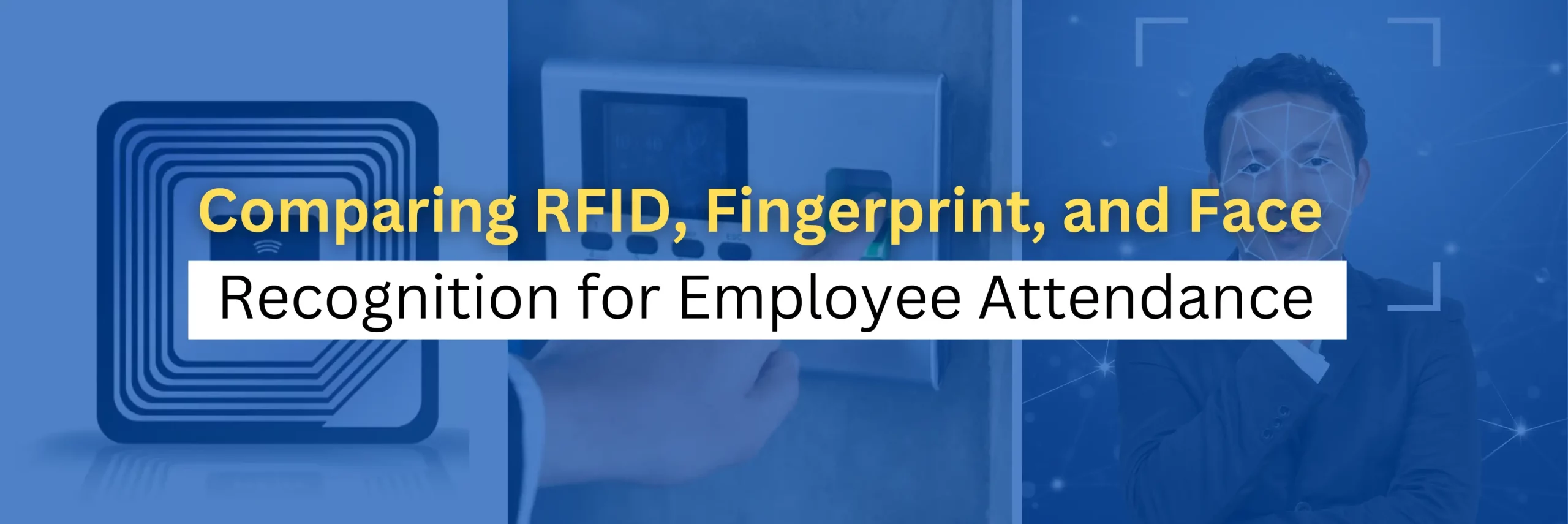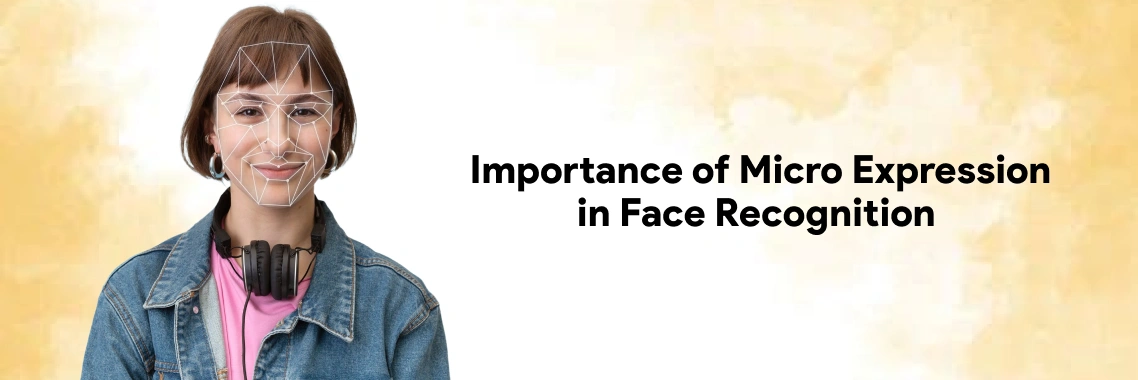Things to Consider While Choosing Face Recognition API
Face recognition API technology has grown in prevalence in the current digital era, providing a multitude of uses from personalization to security and beyond. Face recognition APIs extend their flexibility by creating their integration possibilities. Then you all might be confused with the right face recognition API, right? That's why this post helps you to analyze the factors while choosing the suitable face recognition API.
Facial recognition technology was formerly only an idea seen in science fiction. However, utilizing its power is not only easy, as we have developed technology quickly and introduced Face Recognition APIs.
Knowing the face recognition API
A software interface called the face recognition API enables programmers to include face detection, identification, and analysis features in their applications. With the use of sophisticated algorithms, it uses facial traits from photos or video streams to identify and authenticate people.
Let's see the array of things to consider while choosing the prominent face recognition API:
Accuracy and precision
It is great for users to look into face recognition systems whose algorithms are well-tested and rated highly in industry tests like the FRVT, as accuracy is a crucial component of any successful system. When facial recognition technology is used to safeguard access to highly restricted tangible or intangible assets, such as controlled or hazardous substances, guarded facilities, and highly private data, accuracy may be the most important consideration.
If face recognition applications relied on the most accurate models on the market, many of the most well-liked use cases would probably not be profitable. The most exact models may have to be excluded due to additional limitations like form factor, size, weight, or energy demand. A 99% or higher degree of accuracy is not necessary in the majority of application cases. Moreover, the leading suppliers in the industry probably provide models that can accommodate every one of these limitations while retaining only 1% or 2% of the total.
Attributes
Specific features are provided by each facial recognition system. The following are the three basic characteristics of any system:
Face detection
The technology uses face detection as the first stage in face identification. To find any areas with complete or partially visible human faces, the system first scans the entire image in this step. The effectiveness of the entire facial recognition process depends on fast and accurate face detection, which is a crucial first step.
Facial recognition
Upon facial recognition, the software examines distinct data about particular facial characteristics. After that, if the right person's identification is included, this information template is compared to those who have already pre-enrolled in a database. Considering the debate that occasionally links facial recognition technology to privacy issues, we highly recommend that you choose a vendor that employs high encryption standards to render the template data inaccessible to unauthorized users. As no real face photographs need to be saved via the platform when utilizing a fully encrypted template, complete privacy protection is guaranteed.
Facial attribute recognition
Face attribute detection is the process of recognizing and evaluating features including age, gender, expression on the face, and head position or movements (e.g., nodding, shaking). For use cases such as delivering dynamically modified adverts and messaging to micro-focused audiences or gathering comprehensive visitor statistics, this feature is essential to the functioning of smart retail and digital signs.
Image improvement
This procedure improves the quality of photos taken with inadequate lighting or cameras and allows for extremely accurate processing of the data for facial recognition.
Preventing spoofing
Liveness detection with 2D or 3D cameras is possible with anti-spoofing. Spoofers are detected using both interactive and non-interactive techniques when utilizing a 2D camera, such as a USB webcam. To verify that a real person is there, interactive measures identify accurate and natural head or facial motions. Each solution provider's non-interactive face detection and identification AI algorithm is different.
Due to the depth sensing capabilities of 3D cameras, anti-spoofing may be done almost instantly. Interactive methods for detection or recognition are not required. While 2D alternatives can offer accurate anti-spoofing at a fraction of the cost of 3D cameras, 3D cameras often offer a better experience but are more expensive.
Mask detection and mask-based facial recognition
The existence of a mask and the accuracy with which people cover their mouth and nose can be detected using mask detection features created with public safety and health applications in mind.
Functioning
A facial recognition system's ability to function in various use scenarios may depend on its performance. Hundreds of video feeds must frequently be handled simultaneously during deployments in big facilities, some of which are in heavily used areas. The number of pricey workstations needed to monitor such facilities might be greatly decreased by a provider who offers high-performing face recognition models.
FPS, or frames per second
The number of images captured by the cameras in a second and sent to the facial recognition software for processing is measured here. Accuracy and performance can both increase with higher FPS.
Speed of detection
The detection speed is a measurement of how fast the system can identify faces in an area by scanning for facial traits.
Speed of extraction
The time it takes for the facial recognition system to retrieve the facial data it will need for identification is known as the extraction speed.
Accuracy of recognition
The system's ability to analyze the extracted data and provide identification or a no-match is measured by the recognition speed, which is the last step in the process.
Edge vs. Cloud
A crucial factor for users looking for the fastest possible speed, edge vs. cloud architecture might affect the overall security and performance of your face recognition system. Because data does not need to be transmitted back and forth to the cloud, which could add several seconds to upload transmission, edge-based systems run faster.
Edge-based solutions have gained popularity because they provide several extra advantages.
Security: Information that could be captured can be kept out of the cloud by edge-based devices by not sending it there.
Flexibility: Edge-based solutions can be placed in a range of settings and use cases where cloud connectivity may not be available because they don't require a cloud connection.
On the other hand, cloud computing might be a preferable choice in situations where:
- Infrequent use, like safeguarding a place that isn't often visited.
- Acceptance of less accuracy in lower-risk uses, such as rewards schemes at retail stores.
- Significant hardware cost constraint if you rely on cloud infrastructure and cannot upgrade your current gear.
Hardware and Device Assistance
When choosing your facial recognition system, the hardware environment can occasionally be a limiting element. Here are some things to consider:
Operating system assistance
The most widely used operating systems for which facial recognition software is compatible are Windows and Android. Improved solutions support more operating systems, including iOS, Linux variants, Jetson, etc.
Application and SDK adaptability
The software itself is called facial recognition software, and it is designed to process data taken from video streams to find matches or identify faces. Your facial recognition system's software can be integrated into a few different forms; let's go over them in more detail:
Installable Software
Software development kits (SDKs) constituted the primary delivery method for facial recognition technologies for a while. Although they need a lot of programming and integration work, they are typically adaptable and enable the implementation of precisely designed solutions. For well-defined use cases and shorter timescales, plug-and-play software can therefore be a perfect choice. Plug-and-play solutions come with pre-configured internal software for simple implementation.
The better options are more scalable and can be utilized for deployments involving several cameras spread across multiple locations as well as single cameras. Usually, they can link into networks and cameras that are already in place. The best solutions are readily integrated with other systems, including time and attendance software, door locks, VMS, and others.
Software Development Kits (SDKs) are highly adaptable solutions that are often used in special circumstances where you want total control over how the face recognition algorithm is integrated into your software system. Requiring more capable internal computers or IT personnel to incorporate the SDK into your current software architecture is essential for a successful SDK implementation. Companies that use facial recognition technology can integrate it with their current workflows and procedures.
Ownership cost
Before integrating your facial recognition system, it's essential to take its total cost of ownership into account. Here are a few essential elements to think about:
Initial expenses
When you first start designing and integrating your facial recognition system, some one-time expenditures and investments are included in the initial price. Research, proof-of-concept, hardware, software, integration, training, generating preliminary data, and retrofitting legacy equipment are a few examples of what this might include.
Recurring charges
Throughout your facial recognition, recurring fees will be incurred. These could include server leasing fees, monthly electricity and bandwidth costs, system upkeep, the price of the facial recognition software subscription, and the cost of the necessary capital.
Outdatedness
For your facial recognition system to remain functional throughout its lifetime and not become obsolete due to out-of-date components, you must periodically upgrade its hardware, operating systems, and software.
Change-out cycles
To save money over time, replacement cycles are a common maintenance choice. You can be sure you are using the newest technology, which has been tuned for greater performance and cheaper expenses (including maintenance costs, energy consumption, etc.), by replacing your hardware and software components regularly.
Choose the Appropriate Lystface Face Recognition API For Your Business
Considering the above facts into account, the industry’s top-notch face recognition API has come into existence, Lystface. Yes, each feature is well-defined and adaptable to integrate into your existing system.
Lystface makes sure that the face recognition API is more reliable and meets your needs before you go in. We have examined elements including precision, velocity, cost, and platform or programming language compatibility. To effortlessly integrate the face recognition API into your application, check our documentation and integration standards.
Get seamless integration with our face recognition API for better productivity, Contact us today! We do have 14 days-trial plans.






